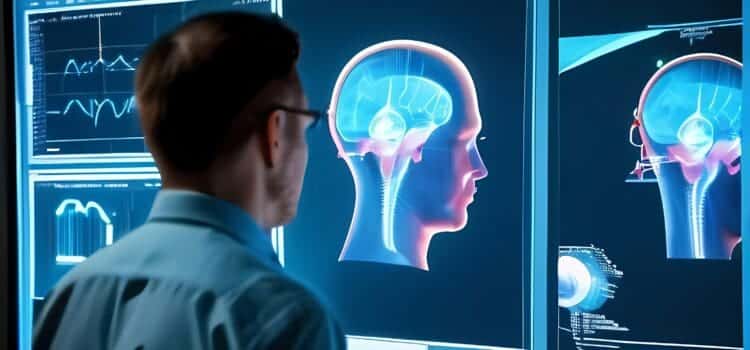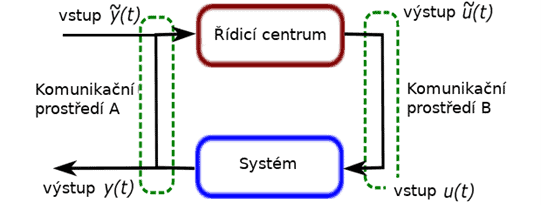2.4 Information Systems and Technologies

Information, information systems, and technologies encompass a very broad field. Today, information is classified alongside material, energy, and financial resources as one of the fundamental factors determining progress—not only technological but also advancements in other areas of human activity [63,64]. Information flows within systems create essential connections and couplings between elements and entire systems in complex technological structures [10,25,33,63]. Without a certain level of information, it is impossible to create or manage processes in technical works and human society [16].
This dissertation focuses primarily on the traffic management system of the Prague metro and the informational support for enhancing safety through the use of information technologies, i.e., increasing information performance. This ensures accurate and timely decision-making based on the degree of knowledge, which is particularly crucial under abnormal and critical conditions. By doing so, the information performance enhances the safety of the system. The following paragraphs describe the use of information systems, the theory of information generation, the parameters of the applied technologies, the degree of information, information performance, and the security of information systems.
A more detailed description of the issues related to information systems and technologies in the field of technical works safety management can be found in [10,16,65]
2.4.1 The Use of Information Systems in Railways
Information technologies and systems serve as tools for management or, in the case of automated operations, independently manage both qualitative and safety parameters. Information systems and technologies are an integral part of railway systems.
Table 3 presents examples of the use of information systems in various areas of railway transportation, including metro operations, which are the focus of this dissertation, according to [65].
Table 3 Examples of the use of information systems in railways [65]
| Area of Application | Used for |
| Management and Planning | Evaluation of operational data, creation of timetables, staff duty rosters, decision-making, economic, and accounting activities, communication with emergency services and police |
| Traffic Management | Central monitoring and control, dispatcher activities, station and track technologies, data collection and processing along train routes, communication between stationary and onboard systems, signaling equipment |
| Train Operation | Train control, onboard computers, data transmission between onboard devices, monitoring and controlling train systems (doors, air conditioning, train intercom, power systems), interface between technician and train driver |
| Passengers: | Information boards, passenger ticketing systems, onboard entertainment systems, Wi-Fi, navigation systems – directional signs, systems for the disabled |
Table 3 Examples of the Use of Information Systems in Railways [65]
2.4.2 The Process of Information Generation
The generation of information is conditioned by observing certain properties of the object under observation or shared properties of a group of objects. Every information system monitors the properties of entities using a specific language, which serves to create information about the observed object [64,65]. Depending on how the information obtained is interpreted, different types of information systems are distinguished [64,65]:
- syntactic information systems, which create a set of informational representations of the state variables of the observed object,
- process information systems, which represent a set of processes
Action information systems, through feedback, influence the original observed object [64], [65]. For the purposes of this dissertation and within the scope of railway traffic management, action process information systems are primarily applied.
The process of information generation, the creation of an information system, the process of creating a new object or modifying an object, consists originally of the following subprocesses, or a set of links and their relations [64], as described in Table 4.
Table 4 The Process of Information Generation and Information Technology [65]
| Subprocess of information generation / set of objects | Affected abstract nodes | Used information technologies | Process inputs | Process outputs | |
| 1 | Object identification | Object, observer | Physical receptors (sensors, detectors) | Observed state (physical) variables of the object | Signals |
| 2 | Observation | Observer, language (syntax) | Sampling, quantification, encoding/decoding | Signals | Data |
| 3 | Communication between source and recipient of the message | Language (observer or data collection system), message recipient | Telecommunication, transmission, and communication systems | Data | Data |
| 4 | Interpretation set, generation of information | Language (observer or data collection system, or recipient), information set (line 6) | Ontology, language | Data | Information |
| 5 | Relationships of functions and structural arrangement of the object, verification of integrity | Information set (line 6), object | Action element of the system, action information system | Object, information | Correctness of information, change of object |
| 6 | Set of information in the set of information systems | Information systems | Information systems | Information | Information |
| 7 | Interpretation process | Information set (line 6), new object | Signaling and information representation technologies, artificial intelligence | Information | Image of the object, new object |
The process of generating an informational image can also be expressed using Frege’s functional concept of the generation of an informational image [64], which consists of the following sets:
- Oi – set of state variables on the object,
- Pi – set of states (observers),
- Φi – set of syntactic strings (data flow),
- Ii – sets of informational images of state variables,
and their mutual relationships described in the work [64], which determine the quality of the process of generating the informational image:
- OP – identification,
- PO – invasiveness (risk of disruption of the integrity of state variables on the object),
- PΦ – projection in the set of symbols and syntactic strings,
- ΦP – correction and identification of indeterminacy,
- ΦI – interpretation, generation of information,
- IΦ – reflection of language constructs,
- IO – relations of functional and structural arrangement,
- OI – verification of integrity.
From Table 4 and according to the source [64], the following definitions can be derived:
- data – uninterpreted data about the state of the object,
- information – interpreted data, information, signals leading to a change in the arrangement in real-world systems or consciousness.
2.4.3 Qualitative Properties of Information Systems and Technologies




2.4.4 Information Performance and Its Relationship to Safety
- safety at the system-of-systems level,
- integrity of measures,
- system-of-systems reliability,
- quality of active and passive measures enhancing the safety of individual systems,
- availability of a specific system or device whenever needed,
- continuity of the measure application process,
- accuracy in measure execution.


- COBIT for auditing information systems from the perspective of executive management [66],
- ITIL for managing information systems and services,
- refactoring, i.e., changes to the software system that improve its internal structure and resource utilization without affecting its external functional behavior [64].
2.4.5 Quality of the Transmission System

**Figure 8. Connections of the control system in a cybernetic system according to [68].**
- the correct behavior of the system and the control center,
- the correct data transmission between the nodes of the cybernetic system.




- system:

- control center:

- communication environment A:

- communication environment B:

2.4.6 Cyber-Physical Systems Security
- Confidentiality – information is not available or revealed to unauthorized individuals, entities, or processes,
- Integrity – information is complete and accurate,
- Availability – accessibility and usability of information always upon request by an authorized entity.